Official & Unofficial Job Sectors
Formal Sector
- Official employment
- Pay taxes and can receive welfare benefits
- Employer follows rules about working conditions
- Likely to receive sick pay & holiday pay.
- Good job security
Informal sectors
- Unofficial employment (shoe shine, car wash etc)
- Don’t pay taxes & so not eligible for welfare benefits
- No rules/regulations about workplace or hours of work
- No sick or holiday pay
- Very little job security
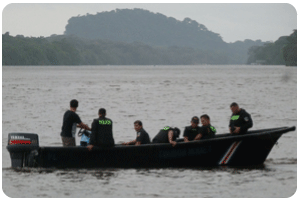
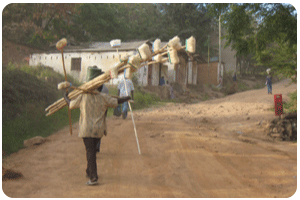
Education & Skills in Industrialisation
For industrialisation to occur in an economy there needs to be a base of capable workers. Education is vital in this regard since engineers and effective managers are required. There need to be the available skilled workers to upgrade infrastructure to prove the necessary utilities for industry (power, water, transport and customs). Without these operating efficiently and reliably industries will fail to be competitive in international markets and remain small or fail. New ideas and the ability to create new machinery is essential in remaining competitive and workers that are educated are more likely to excel at these.
Factors of production
Land: the land for farming and building on, but it also includes the resources under the land (coal, minerals, metals etc), the resources on the land (forests, lakes etc) and the fish stocks in the sea.
Labour: the human effort that is used to produce an item, both mentally & physically. The supply of labour is determined by how many workers are available & how long they can work for.
Capital: anything that is used to produce other goods & services rather than being used for its own sake (machinery, tools, offices etc).
Enterprise: the decision making and risk bearing in business by an entrepreneur. An entrepreneur has to organise the factors of production and decide what & how much to produce.
Inputs, Processes, Outputs
Inputs: the things that are needed to make a product - includes raw materials, energy, machinery/capital and labour.
Processes: the things that have to be done to produce an item/service.
Outputs: the finished product/service and any waste.
Technological advances are enabling us to create much more efficient ways of doing things (car engines require far less fuel to travel the same distance) and so reduce the inputs that are needed. Much higher rates of recycling are reducing the waste and the imputs that are created/needed in mannufacturing processes.
Technology Types & Uses
Utilising technology can be a great way to increase efficiency, access more natural resources and help increase the level of development in a country. It is important that when technology is used in the process of industrialisation it must be appropriate to the ability of the country/community to operate it, maintain it and repair it. There have been many examples of inappropriate technology that has been donated to developing communities which has gone to waste due to a lack of one of the above factors.
Simple Technologies
In very poor countries simple technologies are likely to be the most appropriate. Rural communities might potentially benefit from a large new tractor, but unless they can afford to buy the fuel to run it, have someone who is trained to repair it and can afford the spare parts that are needed it will quickly become unused. Communities such as this would benefit more from basic tools and investment in rainwater harvesting and low-tech drip irrigation systems which could increase their yields and are made from hosepipes. Composting toilets could be another simple technology that improves sanitation (reducing illness) but also provides fertiliser for re-nourishing the soils where crops are grown. These are cheap to build and easy to maintain.
Intermediate Technologies
These are technologies that are more effective and efficient than the existing tools/machinery that are used, but not as complex or costly as the technology of developed countries. Middle income countries and urban areas are likely to benefit from intermediate technologies as they are likely to have a reasonably educated workforce with the ability to operate and maintain most machinery. Technologies such as micro-hydro electricity generation, solar power generation and water filtration systems such UV irradiation and ozonation.
Complex Technologies
These are the technologies that developed countries are investing in to reduce their impact on the environment and make production and lifestyles more sustainable. Technologies in these countries should be making products durable and long lasting as well as relatively cheap. Developed countries tend to have the most advanced educational institutes (Harvard, Oxford etc) and lead the way in innovation and high-tech production.
Economies of scale
Economies of scale are reductions in the average cost of production due to increasing the scale of output. As firms increase in size they can usually make savings on their average costs in a number of ways:
Bulk buying: through purchasing raw materials and capital in larger quantities it is often possible to negotiate a lower price for them. A potato chip manufacturer ordering 10000 kg of potatoes is likely to get a lower price per ton than one ordering only 100 kg.
Selling: order processing and delivery costs can usually be reduced with increases in output. Amazon is able to invest in automated order processing and ensure that delivery lorries are filled to capacity.
Management: as a firm grows it may need to employ more workers but it should be able to retain a relatively small management team. The cost of the managers is spread over increased products and so is cheaper on average. Increased scale may also enable to the firm to employ an accountant to work in the firm which would be cheaper on average than contracting external accountants to complete tasks.
Financial: larger firms with high revenues are often deemed less risky to lend money to than smaller firms due to their potential ability to pay the debt back. This is represented in lower interest rates for larger firms.
Labour Versus Capital
Labour intensive industries
Some industries are labour intensive because there is not a suitable way for them to be mechanised. Coffee picking is generally very labour intensive since the coffee cherries ripen at different rates and need to be carefully selected from each bush, machines are currently not capable of this. Other industries may be labour intensive due to the cost of labour being much cheaper than investing in machinery. Sugar cane is planted & harvested by hand in Tanzania. Other countries such as Brazil & Mauritius use machines for these tasks but in Tanzania the local wages are much cheaper than the cost of buying and maintaining the machines.
Capital intensive industries
Manufacturing industries have typically become highly capital intensive in most countries. Tasks can be broken into small sections on a production line and completed by machines. Car manufacturing in Europe is a good example. Machines weld, assemble components and paint the cars with workers required for very few of the tasks. Machines are quicker at these specific tasks and can ensure each component is of the same quality. The high costs of labour in Europe also means that mechanisation is cheaper.
Commercial chicken farming is another example. Chicken sheds are climate controlled by computers, feed and water is automatically dispensed based on the weight of the chicken coming to feed. There is a minimal amount of labour involved.
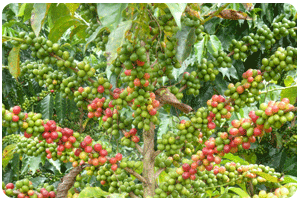
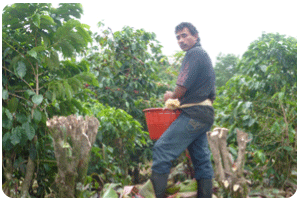

Industrial sectors
Primary: the extraction of raw materials from the ground (mining, fishing, agriculture, forestry).
These industries often require small capital investment when done on a small scale and low levels of education. Due to these factors they often dominate developing countries employment structures. The products can be sold to developed countries for manufacturing. They provide small amounts profit in comparison with manufactured goods. Some types of primary industry products can be used for domestic consumption (fish, staple agricultural crops (rice, potatoes, vegetables)) but minerals and cash crops are usually only for export.
Secondary: manufacturing & construction.
These industries have been associated with developed countries, but recent decades have seen MEDCs de-industrialise with the industries relocating to certain developing countries (India, China, Taiwan, Brazil to name a few). They require significant capital investment to establish but can generate significant profits compared with primary industries. Textiles, metal, plastics and electronics manufacturing have been some of the main manufacturing industries to locate in Asia. High-tech manufacturing is still found in many developed countries. Manufactured products are commonly consumed domestically and exported to generate foreign earnings.
Tertiary: provision of services (banking, education, healthcare etc).
These industries have dominated developed countries employment structures in recent decades. The growth of ICT has led to many software and hardware companies growing rapidly. There has also been considerable growth in office jobs, call centres and finance. These industries generate significant profit and require skilled workers. Some developing countries have large service sectors due to tourism. East African countries such as Tanzania have considerable employment in tourism due to natural attractions such as the Serengeti, Mt. Kilimanjaro and Zanzibar. Global outsourcing is allowing countries to start establishing service sector based on IT and telecommunications.
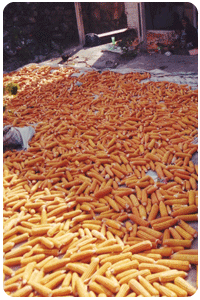

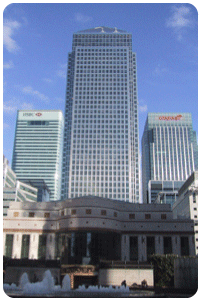
Import: Goods & services brought into a country from another country
Export: Goods and services sent to other countries.
Balance of Trade (BoT): This is the term for the total value of our visible exports minus the value of our visible imports. ‘Visible’ simply means ‘tangible’; literally goods that you can see and touch. Examples include oil or T-shirts.
Terms of Trade (ToT): Price of exportable goods/Price of importable goods. It is a ratio for the amount of imports a country can buy with the money earnt from a set level of exports. An increase in the ratio is generally considered good since it means that the country can buy more imports from the sale of the same level of exports.
Both the BoT & the ToT relate to a countries level of development. Generally speaking countries aim to have a positive BoT since this represents a higher income from the sale of exports than the money spent on imports. Imports can be viewed as a leakage from the economy as they represent money going into another economy. Exports represent an injection of money into the economy.
Developing countries typically rely on the export of raw materials and agricultural produce as a source of foreign earnings. They may sell high volumes of these products but their value is much less than manufactured goods - which they tend to import. This leaves them with a negative BoT.
Developed countries have traditionally relied on importing cheap raw materials, manufacturing them into finished products and selling them as high value items therefore creating a positive BoT.
Special Economic Zones Neocolonialism: Dependency Fair trade: An organisation that aims to lift raise the income of mainly agricultural workers in developing countries. It works on the basis that consumers pay a higher price for fair trade certified products in the knowledge that the growers of the product will receive a higher payment (rather than it going to the retailer, exporters or processors). The above terms relationships to development
Growth and changes in the pattern of world trade since 1950
World trade patterns and characteristics have changed considerably in the last 50 years. There has been a continuous increase in the level of world trade over this period. Some of the major changes are:
De-industrialisation of Developed Economies
One of the main changes to have occurred in the last 30 years is the de-industrialisation of many developed economies. Manufacturing has declined drastically as much of it has moved overseas to developing economies, particularly heavy industry. Textiles, steel making, shipbuilding are examples. Low wages, access to raw materials, proximity to new large markets and reduced costs of shipping have all led to these changes. Developed economies have replaced the manufacturing sector with a service based economy and high-tech manufacturing. New ideas and inventions come from developed economies and then are manufactured in the developing ones. The developed economies retain the intellectual rights and keep most of the profit. Banking, software, telecommunications and media have become key features of developed economies and they export these around the globe. Google, Western Union, DHL are examples.
Trade Blocs
Recent decades has seen the decline of colonial trade agreements and the emmergence of trade blocs. The European Union (E.U.), NAFTA (North American Free Trade Association), CAFTA, ASEAN are examples. These have been established to promote trade and cooperation between geographically close countries. They remove barriers to trade such as quotas and tariffs between countries within the bloc therefore making the products cheaper and more attractive. This has led to much closer trading links within Blocs.
NICs
There have been several countries that have industrialised and become major hubs for manufacturing. China, Brazil, Tiawan, South Korea and India are examples. Much of the worlds manufacturing takes place in these countries and is shipped in containers to the developed countries. Many of the worlds busiest ports are in Asian countries.
Outsourcing
This is a pattern that is emerging and looks set to increase in importance. Advances in transport and communication technologies are prompting firms in developed countries to outsource work to cheaper regions of the world.
Importance of Trade & its Benefits to Countries
Trade is an essential aspect of development. Trade allows countries to focus their efforts on the things that they have an absolute or comparative in and then sell them to buy the other things that they need. This should allow global production to become more efficient and raise the amount of products available to share as well as increasing incomes. In theory this should benefit all countries but the reality has been that many have been left behind whilst others reap huge benefits. Even for the poorest countries trade allows them to sell basic agricultural produce such as fish and crops. In recent years the carbon trading has emerged as a viable way for countries such as Costa Rica which have large amounts of jungle to sell carbon credits to countries that have high carbon emissions such as the USA.
Free Trade Zones
These are areas that have been established in countries to promote investment and attract companies to locate in them. The often give tax breaks (possibly tax free arrangements) for firms manufacturing in these zones. There are no customs duties on imports into these zones such as raw materials. They have generally been successful at attracting industries and generating employment and foreign earnings.
World Trade Agreements
Countries have had trade agreements with other countries spanning centuries. Colonial empires such as the Commonwealth were largely based on trade agreements between the colonies. In recent decades this has been changing as the pattern of world trade changes. The World Trade Organisation (WTO) has been established to try and supervise world trade and make it freer (in the sense that countries should be able to export products based on competitive prices rather than being excluded from trade due to pre-existing agreements).
The WTO also tries to regulate the imposition of tariffs and quotas that restrict the imports of goods from certain countries. These can be considered as trade agreements as they penalise the imports of certain products, or the imports from certain countries. Function and impact of foreign investment on development.
Aid Agencies & Charities
Aid agencies and charities are NGOs (Non-Governmental Organisations). They play a significant role in development in whole range of ways. They often rely on donations and fund raising activities and use this money to raise living standards in developing countries.
Emergency Assistance
One of the forms of aid that charities are often involved in is emergency aid. This is delivered after events such as natural disasters (Haiti earthquake) when countries need external help. They supply items such as shelter, freshwater, food supplies and medicines. The quick provision of these items can prevent much more serious longer term effects occurring such as the spread of disease or a breakdown in law and order as people compete for food and water. Aid agencies often also send skilled personnel to help distribute the resources, assist local doctors and lend expertise to the clean-up effort, or to aid search & rescue efforts.
Long-term Aid
Charities and aid agencies are often involved on long term development projects. These usually involve bringing new technologies, machinery and education to communities and industries. There has been significant emphasis on improving water access and purity in developing countries for rural communities (illness from contaminated water is major issue). Improvements in agricultural techniques to reduce soil degradation and increase yields have also been a focus. Most charities and agencies have members of their staff working in the communities that they are trying to help, as well as providing financial assistance or donating equipment. There have been many criticisms about the work that aid agencies and charities carry out and whether it actually helps. Aid projects have been running for decades in many countries in Africa, yet significant proportions of the population still live below the poverty line. Issues of imposing Western countries ways of doing things and diluting local cultures have been raised as concerns. The current focus of aid projects is generally aimed at making communities self sufficient and ensuring aid projects are sustainable.

What is foreign investment & how effective is it?
IMF (International Monetary Fund): Formed in the 1940s by a collection of countries. It works to stabilise the world economy through increasing cooperation between countries. Has played a leading role in the recent economic crisis assisting with emergency lending & recapitalisation plans.
World Bank: Formed in 1940s by a collection of countries it provides loans for infrastructure and development projects. Current focus is on achieving the millennium goals in countries. Criticisms: prioritises GDP increases to much as an indication of development.
Regional Development Banks (such as Asian Development Bank, African Development Bank):
Causes & Impacts of National Debt
Many countries around the world have significant levels of public debt. MEDC countries have some of the highest levels of external debt in absolute amounts. Many have borrowed vast quantities of money to fund a large public sector section of the economy. These debts have often been considered less of issue than LEDC debts though since they represent a smaller % of the countries GDP and therefore the country should be able to repay them. Countries such as the UK have large amounts of external debt, but are also owed large sums of money that they have loaned to other countries from which they receive regular interest payments.
Many LEDC countries, particularly in Africa have reasonably high levels of external debt, but in these cases they represent many times the level of GDP for the country. This has led to major difficulties in repaying the loan, and often they struggle to repay the interest on the loan - therefore never actually paying the loan off.
The causes of large debt in LEDCs is often loans taken out for expensive infrastructure developments which it was hoped would lead to increased development and the ability to generate more income. Hydro-electric dams, road building programmes and railway construction are examples of the types of schemes for which international money was borrowed.
Political corruption has been another significant factor in the LEDC debt. In many countries money is siphoned off by corrupt officials which leaves less to repay debts and invest in improving the economy.
Impact of Debt Relief
Debt relief is a programme through which some of the richer countries have agreed to cancel some of the debt owed to them by the worlds poorest countries (as long as they meet certain standards such as low corruption). This has been effective in enabling the beneficiary countries to invest more into their health and education services. Unfortunately the recent economic crisis has left many of the richer countries with very little, if any spare money and so they have been reluctant to cancel debts.
Role of FDI & MNCs in Development
FDI (Foreign Direct Investment): investment in firms other countries by firms/individuals to acquire at least 10% of the voting stock of a company.
FDI represent s a flow of capital to other countries. Much FDI flows between MEDCs such as the UK and USA as firms and individuals look to involve themselves in other established markets. In recent decades there have been increasing flows of FDI from MEDCs to LEDCs to take advantage of emerging economies. This injection of capital can give the economy a much needed boost and allow the development of industries that would otherwise not be possible.
MNCs (Multi-National Companies/Corporations): firms that have operations in more than one country.
They bring advantages and disadvantages in terms of development. On one hand they create jobs when they open operations in a developing country. They are also likely to invest in the workforce that they employ in the form of education and training to make them more skilled and more productive. They may also invest in some of the infrastructure of a country such as road or power networks to ensure that they can be as productive and efficient as possible. MNCs often bring new technologies in the machinery that they use, this and the skills to use it can benefit the host country. They also pay taxes to the government which can be a significant boost to the governments budget.
On the other hand MNCs often employ the local population in the lower paid occupations with the management positions being filled by foreign workers. MNCs also send profits to the home country to distribute to shareholders or use for future investment, this removes the profit from the host country apart from wages and tax payments.
Globalisation: The spread of ideas and cultures around the world
Advantages: has increased the range of products and services available to people. Foreign investment and MNCs have led to infrastructure improvements in other countries and created jobs in developing economies. ICT developments have allowed cultural aspects to be shared more easily around the world and increased the knowledge and understanding of different cultures for many people. The globalisation of the media has allowed breaking news stories to be shared around the world almost instantly. Social media is enabling much stronger.
Disadvantages: the globalisation of trade has brought environmental impacts as well as benefits. With the majority of manufacturing being carried out in developing economies whilst much of the consumption of goods is in developed countries there is a considerable amount of transportation involved. Container shipping has vastly increased as goods flow from Asia to Europe and the Americas. The changing expectations of food supplies have led to the globalisation of this industry with fruit, meat, cereals and grains being shipped/flown around the world. Food miles have recently become a significant issue in the food industry. The transportation of goods & food is using vast quantities of fossil fuels and creating considerable air pollution.
Telecommunications
Cellphone communication has exploded in recent decades with Western European and North American markets now being considered relatively saturated. Major growth is occurring in Asian, African and South American countries.
Mobile communication masts are a common feature in most countries now and are a symbol of the growth of the cell phone network. New innovations such as being able to transfer credit (enable the paying for goods in shops through your phone) has revolutionised the way that business is conducted in many African countries.
Costa Rica has recently joined the Central American Free Trade Association and is opening its previously monopolised industries to competition. This has resulted in phone masts springing up around the country as new operators establish themselves. Since 2000 there has been dramatic shift from land line calls to mobile calls.

Internet Network
The internet has seen rapid increases in its adoption across the globe. Establishing itself as a key method of trade and communication its capacity has been rapidly expanding. The major flows of internet traffic are between North American and European countries. These countries have invested heavily in domestic infrastructure but also in Trans-Atlantic cabling.
Eastern Asia (Japan, East China, Malaysia & Singapore) is rapidly increasing its internet traffic with North America & Europe. 2002 saw major sub-marine cable connections with South America. Africa has drastically lagged behind in international internet traffic. Held back by poor connectivity due to the lack of high bandwidth cabling it has experienced slow and expensive internet services often relying on satellite connections. 2009 saw the first major sub-marine internet cable connecting East Africa to the worlds main internet networks. This should provide much faster & cheaper connections.
Ocean Freight Transport
Ocean transportation of goods has seen large increases in recent decades as containerisation and huge cargo ships have revolutionised the industry.
Increasingly manufacturing is done in developing countries and shipped to the developed countries. Asia has many of the busiest container ports.
Global Insight Inc record that sea freight increased by 12% per year from 2001 to 2005. The increase in scale of the boats (new cargo ships can carry 8000+ containers) has led to economies of scale which have significantly reduced the costs.
Strategic canals such as the Panama & Suez have vastly shortened the distance (& time & cost) of shipping between Asia and N. America & Europe.


Outsourcing
Outsourcing: The concept of taking internal company functions and paying an outside firm to handle them. Outsourcing is done to save money, improve quality or free company resources for other activities.
Advantages of outsourcing
Outsourcing is allowing companies to take advantage of much cheaper labour costs in different locations to complete tasks. This should lead to lower costs which can be passed onto the consumer as lower prices therefore benefiting firms and customers. It is also allowing people in developing countries to gain employment in industries that were previously not accessible to them.
Disadvantages of outsourcing
Developments in ICT are enabling companies and individuals to use the speed and low cost of electronic communication methods to outsource many of their activities. Companies can make use of cheaper labour in other countries to complete many of their tasks. Outsourcing has created many jobs and brought a lot of money into Bangalore, India as it has established itself as a global centre for ICT outsourcing.
Impact of outsourcing as a means to development
Leads to investment in infra-structure - internet connections & bandwidth for ICT outsourcing.
Impacts of Travel & Tourism
Grass Roots’ Development
Rural Development Programmes
Exploitation of resources
Many countries in the past have achieved increases in development through exploiting their own natural resources. The UK led the process of industrialisation through exploiting its own considerable coal and metal ore resources. This caused significant environmental degradation in rural areas where the mining occurred and led to serious air pollution in urban areas.
Many less developed countries also have large reserves of resources than could be exploited to sell and generate income. This is a viable route to development but needs to be carefully considered. If exploiting the resources does not generate sufficient income to invest in the country and raise living standards then perhaps the damage it causes is not worth it.
Countries must also realise that the resources are finite and that they are exploiting them at the cost of future generations having access to them.
Developing countries often lack the machinery and skilled labour force to successfully extract the resources at competitive prices and therefore rely on foreign firms to do it. This greatly reduces the economic benefit that exploiting the resources may bring. In some cases developing countries may be better off conserving the resources until they have a higher international price or until they have the ability to extract and process them themselves.
Industrialisation
Foreign Investment
Joint Ventures
Public Vs Private Funding
state, formal and informal developments



